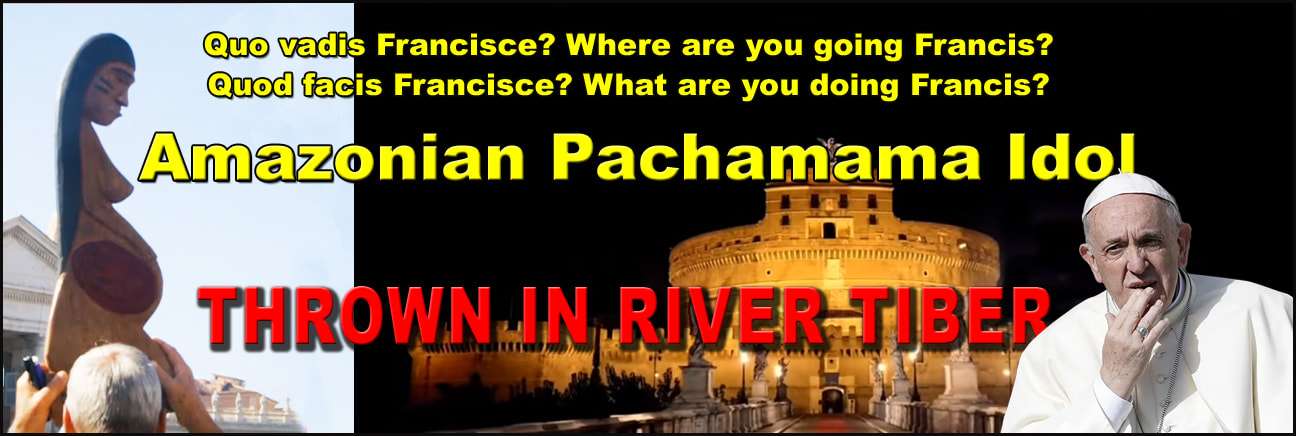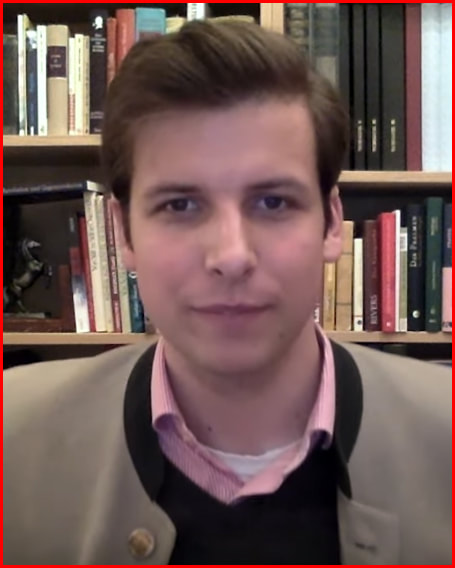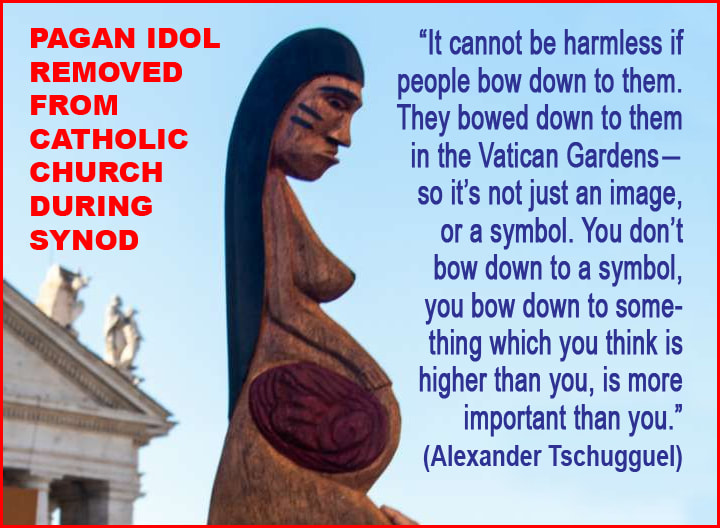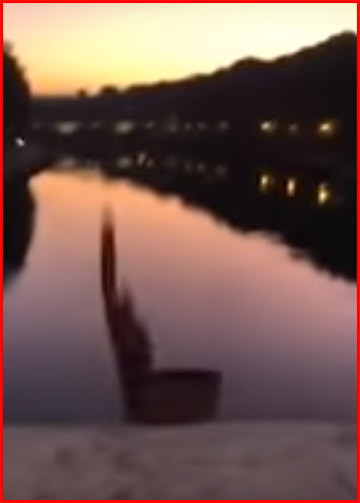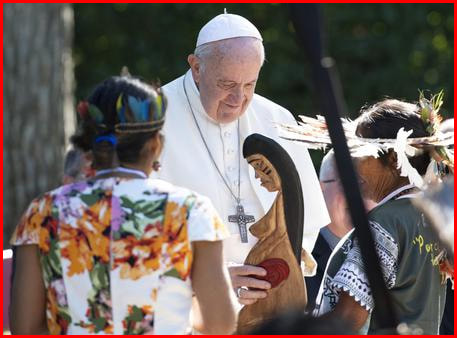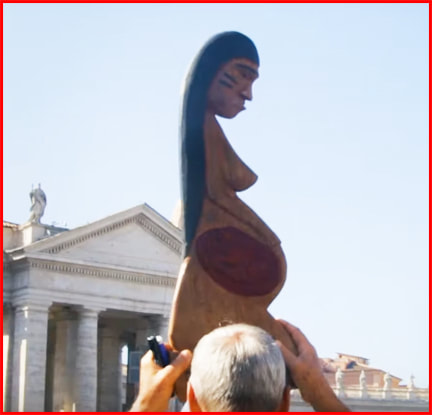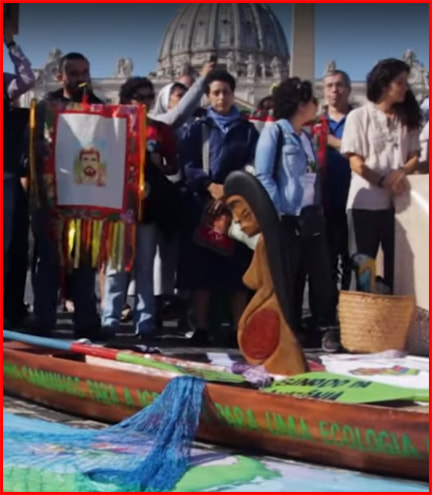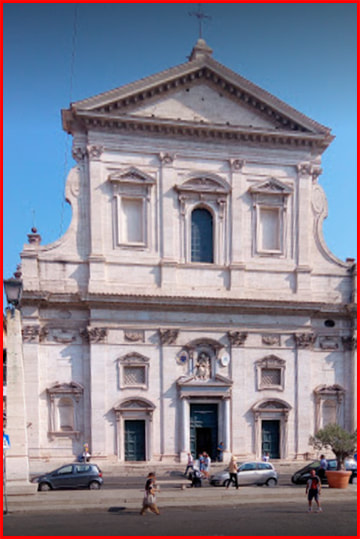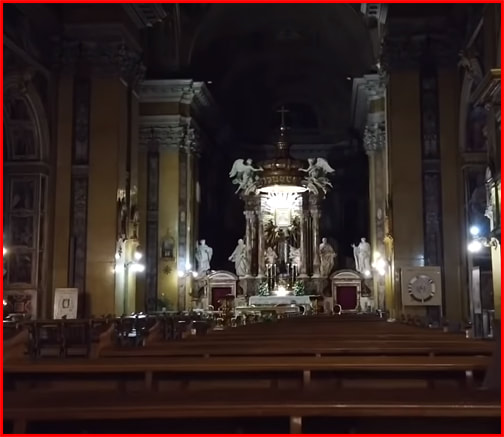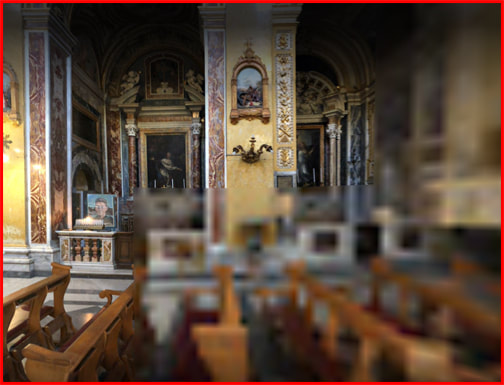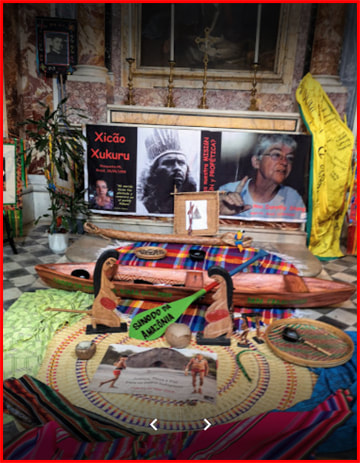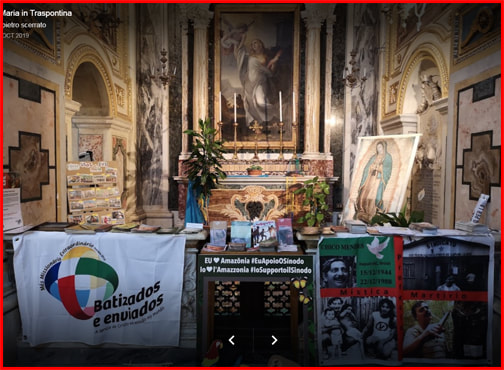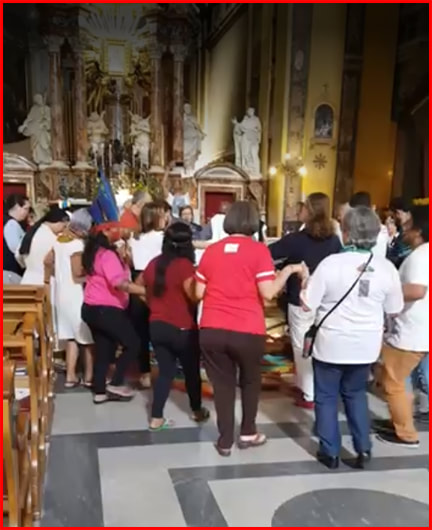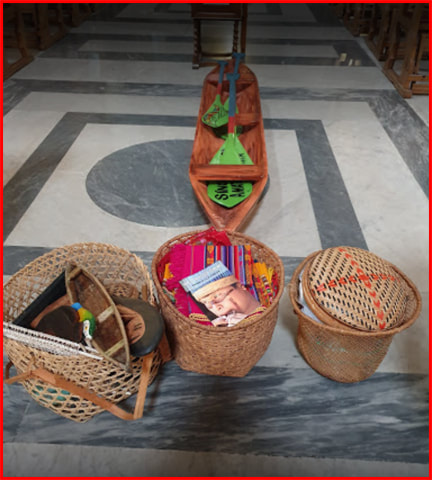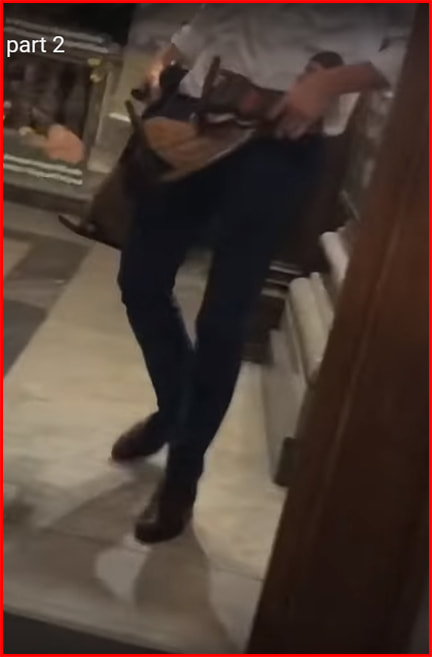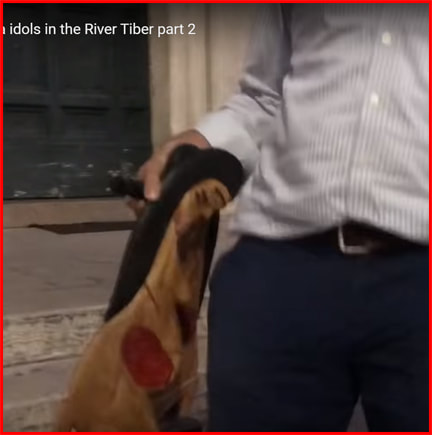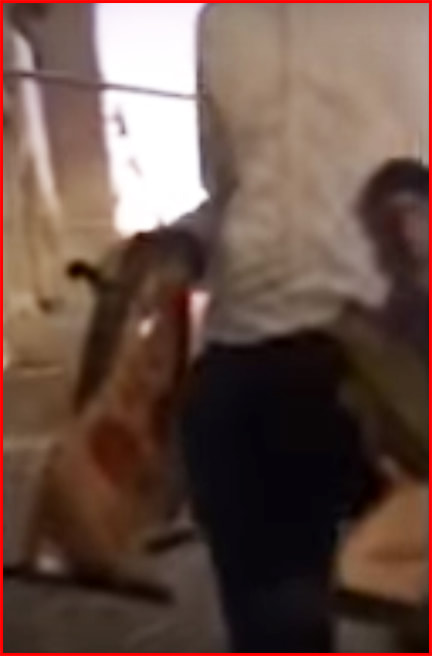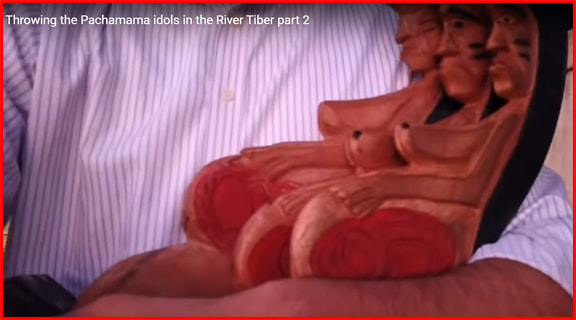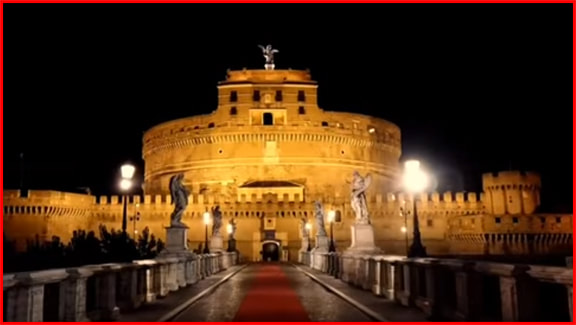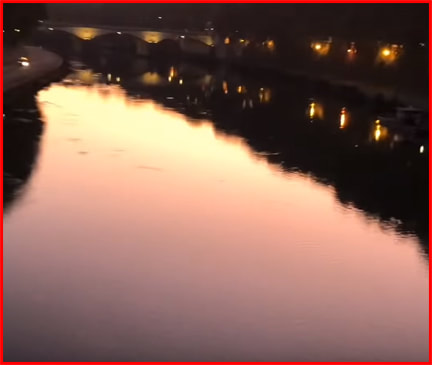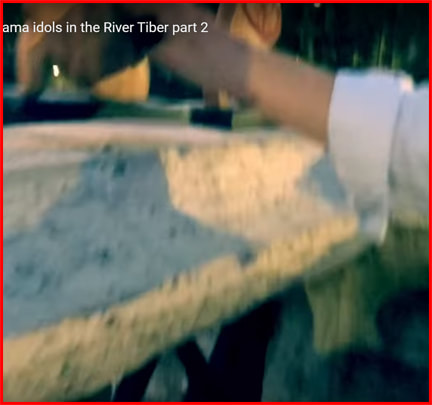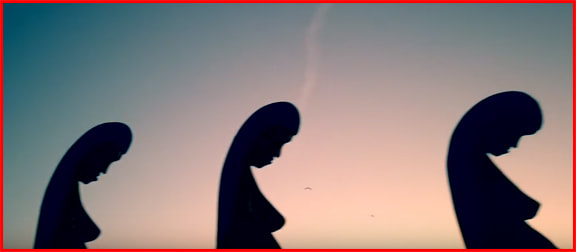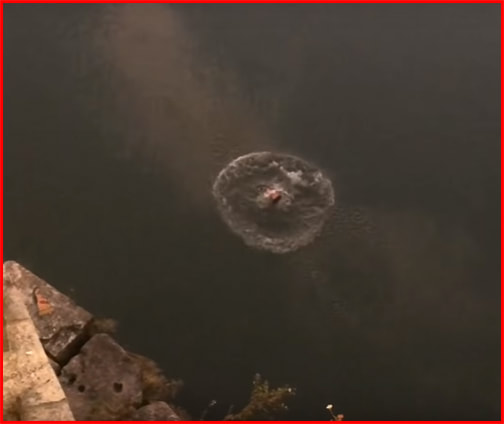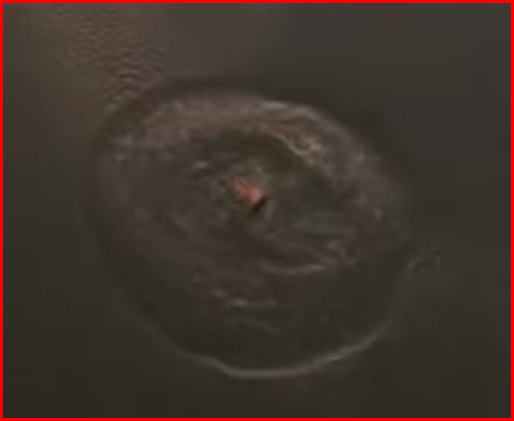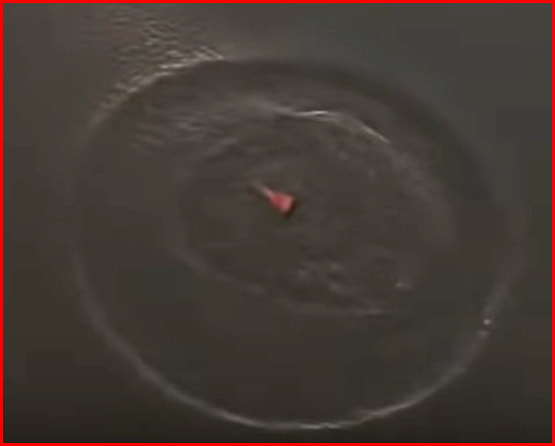| Devotion to Our Lady |
|
- Homepage
-
Daily Thoughts
- 2023 October Daily Thoughts
- Daily Thoughts Lent 2020
- Daily Thoughts for Advent 2019
- Daily Thoughts for October 2019
- Daily Thoughts for September 2019
- Daily Thoughts for August 2019
- Daily Thoughts for July
- Daily Thoughts for June
- Daily Thoughts for Easter 2019
- Daily Thoughts for Lent 2019
- Daily Thoughts for Christmas
- Daily Thoughts Easter 2022
- Sacred Heart
- Holy Ghost
-
Spiritual Life
- Holy Mass Explained
- First Friday Devotions
- First Saturday Devotions
- The Mercy of God
- Vocations
- The Path Everyone Must Walk >
- Gift of Failure
- Halloween or Hell-O-Ween?
- Ignatian Spiritual Exercises >
- Meditation is Soul-Saving
- Spiritual Communion
- Miraculous Medal
- Enrollment in Miraculous Medal
- St. Benedict Medal
- Holy Water
- Advice on Prayer
- Your Daily Mary
-
Prayers
- September Devotions
- Seven Sorrows of Our Lady
-
Novenas
>
- NV-Help of Christians
- NV-Nativity of Our Lady
- NV-Seven Sorrows
- NV- Sorrowful Heart
- NV-Pope St Pius X
- NV-La Salette
- NV-St Michael Archangel
- NV-Immaculate Heart
- NV-Assumption
- NV-Novena for Fathers
- NV-Novena for Your Mother
- NV-St Raphael Archangel
- NV-Souls in Purgatory
- NV-All Saints Day
- NV-Christ the King
- NV-Divine Motherhood
- NV-Guardian Angels
- NV-Rosary
- NV-Mirac Med
- NV- Imm Conc
- NV - Guadalupe
- NV - Nativity of Jesus
- NV-Epiphany
- NV-OL Good Success
- NV-Lourdes
- NV-St Patrick
- NV-St Joseph
- NV-Annunciation
- NV-St Louis de Montfort
- NV-OL Good Counsel
- NV-Last Supper
- NV-Passion
- NV-Pentecost
- NV-Ascension
- NV-Sacred Heart
- NV-Sacred Heart & Perpetual Help
- NV-Corpus Christi
- NV-OL of Perpetual Help
- NV-Queenship BVM
- NV-OL of Mount Carmel
- NV-St Mary Magdalen
- NV- Im Hrt
- August Devotions to IHM
- Immaculate Heart of Mary
- Litany of Dependence
- Prayers to St Mary Magdalen
- Prayers in Times of Sickness Disease & Danger
- Holy Souls in Purgatory
- Meditations on the Litany of Our Lady
- Special Feast Days
- Prayers to Mary (Mon-Sun)
- Litanies to Our Lady >
- Various & Special Needs
- Our Lady of the Rosary
- Our Lady of Mt. Carmel
- Our Lady of Perpetual Help
- Our Lady of Guadalupe
- Other titles of Our Lady
-
Rosary
- Downloads
- Consecration
- Easter Season
-
Holy Week
- Last Seven Words of Jesus >
- Characters of Passion >
- The Last Days of Christ
- Before Palm Sunday
- Palm Sunday
- Monday in Holy Week
- Tuesday in Holy Week
- Wednesday in Holy Week
- Holy Thursday (Last Supper)
- Holy Thursday (Agony & Arrest)
- Night Vigil with Christ
- Good Friday (Pilate & Herod)
- Good Friday (Way of Cross & Crucifixion)
- Saturday in Holy Week
-
Lent
- Ideas for Lent
- Daily Lenten Planner
- Daily Lenten Liturgy
- From Cold to Hot
- Lent with Aquinas
- Lent with Dom Gueranger
- Virtues for Lent
- History of Penance
- How Expensive is Sin?
- Confession of Sins
- Letter to Friends of the Cross
- Sermons for Lent
- Stations of the Cross >
- Lenten Prayers
- 7 Penitential Psalms
- Lenten Psalms SUN
- Lenten Psalms MON
- Lenten Psalms TUE
- Lenten Psalms WED
- Lenten Psalms THU
- Lenten Psalms FRI
- Lenten Psalms SAT
- Lenten Laughs
- Septuagesima
-
Christmas
- Epiphany Explained
- Suggestions for Christmas
- Food For Thought
- Christmas with Aquinas
- Christmas with Dom Gueranger
- Christmas Prayers
- Candles & Candlemas
- Christmas Sermons
- Christmas Prayers SUN
- Christmas Prayers MON
- Christmas Prayers TUE
- Christmas Prayers WED
- Christmas Prayers THU
- Christmas Prayers FRI
- Christmas Prayers SAT
- Twelve Days of Christmas >
-
Advent Journey
- Purgatory
- Christ the King
- Legion of Mary
- Scapular
-
Saints
-
Martyrs for the Faith
>
- Your Daily Martyr >
- All 365 Days of Martyrs
- Cristeros
- St Valentine & Valentine's Day
- Martyrs--Thomas Becket
- Martyrs--John the Apostle
- Holy Machabees
- Age of Martyrdom
- Carmelites of Compiegne
- Martyrs--Peter & Paul
- Martyrs--John the Baptist
- Martyrs--Andrew
- Martyrs--James the Great
- Martyrs--North American
- Martyrs--Seven Holy Sleepers
- Martyrs--Afra
- School of Martyrdom
- Martyrs--Christina
- Desert Saints >
- Saints for Sinners >
- Saints of Mary >
- History of All Saints Day
-
Martyrs for the Faith
>
- Precious Blood
- Synod 2023
-
Catechism
- Catechism Lesson 1
- Catechism Lesson 2
- Catechism Lesson 3
- Catechism Lesson 4
- Catechism Lesson 5
- Catechism Lesson 6
- Catechism Lesson 7
- Catechism Lesson 8
- Catechism Lesson 9
- Catechism Lesson 10
- Catechism Lesson 11
- Catechism Lesson 12
- Catechism Lesson 13
- Catechism Lesson 14
- Catechism Lesson 15
- Catechism Lesson 16
- Catechism Lesson 17
- Catechism Lesson 18
- Catechism Lesson 19
- Catechism Lesson 20
- Catechism Lesson 21
- Catechism Lesson 22
- Bible Study
-
Calendar
- Miracles
- Apparitions
- Shrines
- Prophecies
- Angels Homepage
- Hell
-
Church Crisis
- Conspiracy Theories
- Amazon Synod 2019 >
- Liberalism & Modernism
- Modernism--Encyclical Pascendi
- Modernism & Children
- Modernism--Documents
- The Francis Pages
- Church Enemies on Francis
- Francis Quotes
- Amoris Laetitia Critique
- Danger of Ignorance (Pius X)
- Restore all In Christ (Pius X)
- Catholic Action (Pius X)
- Another TITANIC Disaster?
- The "Errors of Russia"
- CRISIS PRAYERS
- Election Novena 2024
- The Anger Room
- War Zone
- Life of Mary
- Spiritual Gym
- Stupidity
- Coronavirus and Catholicism
- History & Facts
- Books
- Catholic Family
- Children
- Daily Quiz
-
Novena Church & Pope
- Day 01 Church-Pope Novena
- Day 02 Church-Pope Novena
- Day 03 Church-Pope Novena
- Day 04 Church-Pope Novena
- Day 05 Church-Pope Novena
- Day 06 Church-Pope Novena
- Day 07 Church-Pope Novena
- Day 08 Church-Pope Novena
- Day 09 Church-Pope Novena
- Day 10 Church-Pope Novena
- Day 11 Church-Pope Novena
- Day 12 Church-Pope Novena
- Day 13 Church-Pope Novena
- Day 14 Church-Pope Novena
- Day 15 Church-Pope Novena
- Day 16 Church-Pope Novena
- Day 17 Church-Pope Novena
- Day 18 Church-Pope Novena
- Day 19 Church-Pope Novena
- Day 20 Church-Pope Novena
- Day 21 Church-Pope Novena
- Day 22 Church-Pope Novena
- Day 23 Church-Pope Novena
- Day 24 Church-Pope Novena
- Day 25 Church-Pope Novena
- Day 26 Church-Pope Novena
- Day 27 Church-Pope Novena
- Day 28 Church-Pope Novena
- Day 29 Church-Pope Novena
- Day 30 Church-Pope Novena
- Day 31 Church-Pope Novena
- Day 32 Church-Pope Novena
- Day 33 Church-Pope Novena
- Day 34 Church-Pope Novena
- Day 35 Church-Pope Novena
- Day 36 Church-Pope Novena
- Day 37 Church-Pope Novena
- Day 38 Church-Pope Novena
- Day 39 Church-Pope Novena
- Day 40 Church-Pope Novena
- Day 41 Church-Pope Novena
- Day 42 Church-Pope Novena
- Day 43 Church-Pope Novena
- Day 44 Church-Pope Novena
- Day 45 Church-Pope Novena
- Day 46 Church-Pope Novena
- Day 47 Church-Pope Novena
- Day 48 Church-Pope Novena
- Day 49 Church-Pope Novena
- Day 50 Church-Pope Novena
- Day 51 Church-Pope Novena
- Day 52 Church-Pope Novena
- Day 53 Church-Pope Novena
- Day 54 Church-Pope Novena
- Penance Novena
- Daily WeAtheR Forecast
THE 2019 PAN-AMAZON SYNOD OF BISHOPS
Rome, October 6th to October 27th
Click on any link below
| General Articles on the Synod | Amazon Synod Daily Updates | Synod Sequel | Pagan Idols Destroyed |
| The Instrumentum Laboris or Working Document of the Synod | The Final Document of the Synod |
| CCC Crazy Comments Critiqued |
Other related links
| Church Crisis | Liberalism & Modernism | Modernism & Children | Encyclical on Modernism, Pascendi (Pius X) |
| Modernist Documents | The Francis Pages | Church Enemies on Francis | Francis Quotes |
| Amoris Laetitia Critiqued (Pope Francis) | Dangers of Ignorance (Pius X) | Restoring All Things In Christ (Pius X) |
Catholic Action (Pius X) | Syllabus of Errors (Pius X) | Syllabus of Errors (Pius IX) |
| Another Titanic Disaster | The "Errors of Russia" | Conspiracy Theories |
Rome, October 6th to October 27th
Click on any link below
| General Articles on the Synod | Amazon Synod Daily Updates | Synod Sequel | Pagan Idols Destroyed |
| The Instrumentum Laboris or Working Document of the Synod | The Final Document of the Synod |
| CCC Crazy Comments Critiqued |
Other related links
| Church Crisis | Liberalism & Modernism | Modernism & Children | Encyclical on Modernism, Pascendi (Pius X) |
| Modernist Documents | The Francis Pages | Church Enemies on Francis | Francis Quotes |
| Amoris Laetitia Critiqued (Pope Francis) | Dangers of Ignorance (Pius X) | Restoring All Things In Christ (Pius X) |
Catholic Action (Pius X) | Syllabus of Errors (Pius X) | Syllabus of Errors (Pius IX) |
| Another Titanic Disaster | The "Errors of Russia" | Conspiracy Theories |
PACHAMAMA DUNKER EMERGES FROM HIS BUNKER!
The speculation as who the man was who removed five Pachamama idols from the church of Santa Maria in Trasportina and then threw off a nearby bridge into the River Tiber, is now clarified, as the man revealed his identity on November 4th in a video explaining why he removed the five pagan idols from Santa Maria in Transpontina church in the early hours of the morning on October 21st, 2019. Below you will find the transcript of his video in which he explains the reasons behind his action.
|
THE PACAHAMAMA DUNKER
On Monday November 4th, Alexander Tschugguel, a 26-year-old Austrian Catholic convert from Lutheranism in 2009, revealed himself to be the person behind throwing the Pachamama idols into the Tiber River during the Synod of Bishops on the Pan-Amazon Region.
BELOW: Pachamama takes a dip in the Tiber
|
TRANSCRIPT OF THE INITIAL VIDEO RELEASE BY ALEXANDER TSCHUGGUELL
which then povoked an avalanche of interviews by major news and meidia outlets Hello, my name is Alexander Tschugguel (pronounced “Chug-who-ell) and I am the guy who threw the Pachamama idles into the River Tiber.
Why did I do that? You have to know I followed very closely what was happening in Rome surrounding the Amazon Synod, and I had the idea in my mind that I should get more information in Rome itself. So I traveled to Rome at the beginning of the Synod to attend a few conferences which were held to get closer information on all the different issues of the Amazon Synod Around those conferences I visited the church Santa Maria in Transpontina, which is right between Castel Sant’Angelo and the Basilica of St. Peter. In this church there were two side chapels prepared for visitors of the Amazon Synod. So there were volunteers standing around, and within the chapels you saw different symbols of the Amazonian culture and the Amazonian area, and with this, you’ve those symbols [that] were statues of so-called Pachamamas. The volunteers there explained us that these are signs of fertility and of Mother Earth and of integral ecology and everything, and when we talked a little bit longer with them they even explained us that the Synod is not about something religious it’s more about politics. And I had lots of questions to them. I even talked to them about if the people in the Amazon get baptized from the missionaries, and they told me no, they normally not, because it’s not part of their culture and so on. So I was very upset. I went inside the church another time with a friend who is able to speak Portuguese to get even more information, and after all the visits and everything I heard, for me it was totally clear: this is against the First Commandment. It is something wrong. it is a Fertility goddess, Mother Earth, and the First Commandment - I am the Lord your God you shall not have other gods beside me, you shall not bow down to any graven image. And then I saw the video of them bowing down to this particularly graven image in the Vatican gardens. I traveled back to Austria and really tried to think over and over over―is this, is this good, is this good? And then I came to the conclusion―together with friends of mine―we should do that, we should go to Rome, we should get the statues out of the church. They do not belong in a Catholic Church. They should be outside of the church. So we traveled there. And in the early morning, two weeks ago, now, we stood up and went to the church Santa Maria in Transpontina. We heard it opens at 6:30 a.m. but apparently it was not opened. So we walked around a little bit, prayed a rosary as we sat down on the bench next to the church, prayed the rosary and when the last Hail Mary was spoken, the church doors were opened. So we just went inside. I looked at both of the chapel’s to see where the Pachamamas are now standing, then went inside the chapels and tried to get as many pagan things out of it as possible, so I was able to grab five Pachamama statues. Then we went outside of the church, went to the Castel Sant’Angelo, and next to the Castel Angelo there’s bridge, the so-called Angels Bridge, and from the Angels Bridge we threw them one by one into the River Tiber. It was a great success. We didn’t really understood it in this second, but an hour later and two hours later and three hours later we really we really understood that this had a great impact on the Catholic world and on the Synod, because now everybody was seeing what happens in the Synod. They now try to inform themselves, what are these Pachamamas, what is it directly, what do they stand for, and they also ― that that’s not Catholic. So we got tons of support and fantastic people prayed for us I think millions of rosaries by now, and I’m so glad and I’m so happy that this happened because you know without praying for each other nothing works. And and so we decided we don’t want to hide. I want to go out to public and tell them because I don’t want them to think it was a coward action. We didn’t go out earlier because we wanted the action itself being the main point at the discussion, so we wanted the people to talk about what happened and not who did it. But now, two weeks later, one week after the end of the Amazon Synod, we are ready, we want to face them, we want to show them there are some laymen, there are some laymen, we stand up and we don’t longer accept things like that happening in the Catholic Church. We were from Austria from Vienna and are now currently back in Vienna in our wonderful city and ready for for more action and for more work on it. So just subscribe to this channel on YouTube and then you will get another video within the next few hours and/or days where we will explain a little bit more about our thoughts we had about on the Synod. Till then, Godspeed, God bless you all and thank you for all your support. MORE INFORMATION AND QUOTES TO FOLLOW AS THEY ARE TRANSCRIBED THROUGHOUT THE DAY |
Pope Francis’s “God of Surprises” Catches Pachamama by Surprise and Throws Idols into the River Tiber! Was that a “Surprise”? No Surprise There!
You can watch the anonymously posted YouTube videos on the links provided below. Obviously no faces are shown due to the nature of the operation of taking the idols out the the Catholic church without permission. Perhaps God's Commandment--thou shalt not have strange gods before Me--was sufficient permission!
Click on either or both links below
Low quality video―silent―4 minutes: https://www.youtube.com/watch?v=xoB_gjuZgf8
High quality video―sound added―2 minutes: https://www.youtube.com/watch?time_continue=1&v=QfQYHbX38ig
Click on either or both links below
Low quality video―silent―4 minutes: https://www.youtube.com/watch?v=xoB_gjuZgf8
High quality video―sound added―2 minutes: https://www.youtube.com/watch?time_continue=1&v=QfQYHbX38ig
|
The photos posted below are screenshots that have been taken from the above mentioned videos of the 'idol kidnapping' event
BELOW: Two statues of the idol Pachamama at Pope Francis's "Tree Planting Ceremony" on October 4th, in the Vatican Gardens preparing for the start of the Amazon Synod
BELOW: Pope Francis meets Pachamama
BELOW: Pachamama next makes an appearance as a central element to the Via Crucis (Way of the Cross or Stations of the Cross) in St. Peter's Square
BELOW: Pachamama during the Way of the Cross, placed next to an Amazonian canoe--litlle did Pachamama know how useful that canoe could be when she would later be cast into the River Tiber! Alas! Pachamam could find no canoe then!
BELOW: Pachamama then made her way over to the Carmelite church of Santa Maria in Transpotina
BELOW: Pachamama took up residence in one of the side altars in the church of Santa Maria in Transpontina, dedicated to Our Lady of Mount Carmel--which brings back memories of Elias's battle with the false prophets on Mount Carmel. In fact, the two side altars that were invaded by the Amazonian Pachamama and other Amazonian paraphernelia, were facing the side altars of Elias and Our Lady of Sorrows on the other side of the nave.
BELOW: In front of the Amazonian canoe you have TWO Pachomamas--evidently they don't like paddling alone!
BELOW: More Amazonian paraphernelia cluttering up sacred space
BELOW: Not only does the Amazonian paraphernelia invade the side altars, but they have to have a good dance in the central aisle of the church. Seems like everyone has been bitten by dance-bug from Francis Amazonian Garden Party and Pachamama worship. Well, for most folk, dancing is more fun than praying, so why not try dance you way to Heaven?
BELOW: Enough is enough! If the clergy will not do something about all this secular, pagan, syncretic garbage, then someone has to step in and take matters in hand. A young man, videod by his friend, in the very early hours of the morning, walks into the church and takes all the statues he can find of the pagan idol Pachamama out of the church of Santa Maria in Traspontina and takes them away for a fate that must have the surprised the false gods
BELOW: With both hands full of false idols, he boldly walks out the church
BELOW: He carries the false idols to the Castel San'Angelo (Castle of St. Michael the Archangel). How's that for providence! St. Michael, who threw the evil angels into Hell, is going to watch a soldeir of Christ thow the devil's idols into the River Tiber!
BELOW: Right across from the entrance to the Castle of St. Michael the Archangel, is a bridge that crosses the River Tiber. It is from this bridge that the Pachamama false idol statues will meet their watery fate.
BELOW: The Pachamama statues are all lined-up like ducks in a row!
BELOW: Providentially, the statues were carved with bowed heads. They are not only looking down on their pregnant wombs, but also looking down on their watery tombs!
BELOW: You could almost say that these pagan Pachamamas are about to be 'baptized' in the old-fashioned way--by full immersion!
BELOW: Whose hand is that which is about push Pachamama over the edge of the bridge parapet and into the Tiber? Is it the hand of a man, or the Hand of God?
BELOW: Away she goes! A parachuteless Pachamama! Hopefully she knows how to swim!
BELOW: Pachamama makes a big splash in Rome--but not the kind of big splash she was expecting!
BELOW: A closer view of Pachamama--this time without the canoe!
“And Jesus said to His disciples: ‘It is impossible that scandals should not come―but woe to him through whom they come! It were better for him, that a millstone were hanged about his neck and he be cast into the sea, than that he should scandalize one of these little ones!” (Luke 17:1-2).
“Whosoever shall scandalize one of these little ones that believe in Me―it were better for him that a millstone were hanged around his neck, and he were cast into the sea!” Mark 9:41). Well, if there is no sea to be found, then the River Tiber will have to do instead!
BELOW: You can see Pachamama (bottom right) starting her journey out of Rome, carried away by the current of the River Tiber |
Don't Play With Idols
“All the gods of the Gentiles are devils!” (Psalm 95:5). “The things which the heathens sacrifice, they sacrifice to devils, and not to God. And I would not that you should be made partakers with devils. You cannot drink the chalice of the Lord, and the chalice of devils: you cannot be partakers of the table of the Lord, and of the table of devils!” (1 Corinthians 10:20-21). “And Jesus said to His disciples: ‘It is impossible that scandals should not come―but woe to him through whom they come! It were better for him, that a millstone were hanged about his neck and he be cast into the sea, than that he should scandalize one of these little ones!” (Luke 17:1-2). “Whosoever shall scandalize one of these little ones that believe in Me―it were better for him that a millstone were hanged around his neck, and he were cast into the sea!” Mark 9:41). The image of the naked, bare-breasted, pregnant kneeling woman has been at the center of a great controversy ever since she made an appearance at a tree-planting ceremony with Pope Francis at the start of the Amazon Synod. A woman presented it to the Pope as “Our Lady of the Amazon”, but the photo agency Getty described it as a statue of “Pachamama”, an Andean goddess. Is Pachamama an Idol or Not? Fr Giacomo Costa, a Synod spokesman, told a press conference: “It is not the Virgin Mary, who said it is the Virgin Mary?… It is an indigenous woman who represents life.” But a Synod participant, Fr. Roberto Carrasco Rojas, OMI, has insisted that the figure is a Marian figure. “This figure is the Virgin Mary of the Amazon, Our Lady of the Amazon … It’s a devotion that started in the indigenous communities … They carved in wood an image of a blessed mother, who is pregnant.” However, others argue that the figure can mean many different things to different people. Bishop David Martínez De Aguirre Guinea told reporters at an press briefing on October 7th: “Probably, those who used this symbol wished to refer to fertility, to women, to life, the life present among these Amazonian people and Amazonia is meant to be full of life. I don’t think we need to create any connections with the Virgin Mary or with a Pagan element.” Dr. Paolo Ruffini, the Vatican’s chief communications officer, said it was “a statue that represents life; that’s it”. Well several of those statues were just thrown into the River Tiber and hopefully ‘baptized’! To use the words of Dr. Paul Ruffini: “That’s it!” Is Pachamama a Paganmama? Pachamama is a goddess revered by the indigenous people of the Andes. She is thought to be the Earth Mother or Mother of Time or the Mother of the Universe or Cosmos― since pacha is a word in both Quechua and Aymara that in English means “earth, cosmos, universe, time, space, etc.” and mama means “mother.” Pachamama is usually translated as “Mother Earth”, but a more literal translation would be “World Mother” (in Aymara and Quechua). The Inca goddess can be referred to in multiple ways; the primary way being Pachamama. Other names for her are: Mama Pacha and La Pachamama. La Pachamama differs from Pachamama because the “La” signifies the interwoven connection that the goddess has with nature, whereas Pachamama – without the “La” – refers to only the goddess. Pachamama and Inti are worshiped as benevolent deities in the area known as Tawantinsuyu. Tawantinsuyu is the name of the former Inca Empire, and the region stretches through the Andean mountains in present-day Bolivia, Ecuador, Chile, Peru, and northern Argentina. In Inca mythology, Pachamama is the highest divinity of the Andean people. The four cosmological Quechua principles ― Water, Earth, Sun, and Moon ― claim Pachamama as their prime origin. She is a goddess who presides over planting and harvesting, embodies the mountains, and causes earthquakes. She is also an ever-present and independent deity who has her own self-sufficient and creative power to sustain life on this Earth. In the Andean, culture the Pachamama is the goddess who protects all material goods and at the same time rules over the spiritual universe. Therefore, she symbolizes the human environment in every aspect, so those who believe in her will maintain a balanced, reciprocal relationship with her. Her shrines are hallowed rocks, or the boles of legendary trees, and her artists envision her as an adult female bearing harvests of potatoes and coca leaves. Pachamama Day Pachamama has a special worship day called Martes de challa (Challa’s Tuesday), when people bury food, throw candies, and burn incense to thank Pachamama for their harvests. The central ritual to Pachamama is the Challa or Pago (Payment). It is carried out during all of August, and in many places also on the first Friday of each month. According to Mario Rabey and Rodolfo Merlino, Argentine anthropologists who studied the Andean culture from the 1970s to the 1990s, “The most important ritual is the challaco. Challaco is a deformation of the Quechua words “ch’allay” and “ch’allakuy”, that refer to the action to insistently sprinkle. In the current language of the campesinos of the southern Central Andes, the word challar is used in the sense of “to feed and to give drink to the land.” The challaco covers a complex series of ritual steps that begin in the family dwellings the night before. They cook a special food, the tijtincha. The ceremony culminates at a pond or stream, where the people offer a series of tributes to Pachamama, including food, beverage, leaves of coca and cigars. Since she is concerned with fertility, plentifulness, the feminine, generosity and ripening crops, besides providing protection, worshipers venerate the Pachamama with offerings through rituals like the challa. In some regions, a special kind of libation known as a challa is performed on a daily basis. The challa is performed by spilling a small amount of chicha on the floor, and then drinking the rest. People usually give a toast to honor Pachamama before meetings and festivities. It is very common for the Pachamama to receive the first serving of beer at their social gatherings since believers pour a few drops on the ground before they take their first sip. This is a way to thank and feed the Pachamama. In some cases, celebrants assist traditional priests, known as yatiris in Aymara, in performing ancient rites to bring good luck or the good will of the goddess, such as sacrificing guinea pigs, llamas, or burning llama fetuses―although this is rare today. This burning llama fetuses used to be one of the most common offerings to the Pachamama in the Aymara culture. Once dried, the llama fetus is buried under the foundations of a building, or in the crop fields during August, to attract wealth and well-being and to keep bad energy away. Other ceremonies are carried out in special times, as upon leaving for a trip or upon passing an apacheta [es]. In pre-Hispanic culture, Pachamama is often a cruel goddess eager to collect her sacrifices. As Andean cultures form modern nations, Pachamama remains benevolent, giving, and a local name for Mother Nature. Thus, many in South America believe that problems arise when people take too much from nature because they are taking too much from Pachamama. Pachamama is the mother of Inti the sun god and Mama Killa the moon goddess. Pachamama is said to also be the wife of Inti, her son. Household Pachamama Rituals Rituals to honor Pachamama take place all year, but are especially abundant in August, right before the sowing season. Because August is the coldest month of the winter in the southern Andes, people feel more vulnerable to illness.[August is therefore regarded as a “tricky month.” During this time of mischief, Andeans believe that they must be on very good terms with nature to keep themselves and their crops and livestock healthy and protected. In order to do this, families perform cleansing rituals by burning plants, wood and other items in order to scare evil spirits who are thought to be more abundant at this time. People also drink mate (pronounced mah-tay), a South American hot beverage, which is thought to give good luck. On the night before August 1st, families prepare to honor Pachamama by cooking all night. The host of the gathering then makes a hole in the ground If the soil comes out nicely, this means that it will be a good year; if not, the year will not be bountiful. Before any of the guests are allowed to eat, the host must first give a plate of food to Pachamama. Food that was left aside is poured onto the ground and a prayer to Pachamama is recited. Pachamama Sunday Parades A main attraction of the Pachamama festival is the Sunday parade. The organizational committee of the festival searches for the oldest woman in the community and elects her the “Pachamama Queen of the Year.” This election first occurred in 1949. Indigenous women, in particular senior women, are seen as incarnations of tradition and as living symbols of wisdom, life, fertility, and reproduction. The Pachamama queen who is elected is escorted by the Gauchos who circle the plaza on their horses and salute her during the Sunday parade. The Sunday parade is considered to be the climax of the festival. New Age Pachamama Worship There has been a recent rise in a New Age practice among white and Andean mestizo peoples. There is a weekly ritual worship which takes place on Sundays and includes invocations to Pachamama in Quechua, although there are some references in Spanish. Inside the temple, there is a large stone with a medallion on it, symbolizing the New Age group and its beliefs. A bowl of dirt on the right of the stone is there to represent Pachamama, because of her status as a Mother Earth. Many rituals related to the Pachamama are practiced in conjunction with those of Christianity, to the point that many families are simultaneously Christian and pachamamistas. Pachamama is sometimes syncretized as the Virgin of Candelaria. Certain travel agencies have drawn upon the emerging New Age movement in Andean communities (drawn from Quechua ritual practices) to urge tourists to come to visit Inca sites. Tourists visiting these sites, such as Machu Picchu and Cusco, are offered the chance to participate in ritual offerings to Pachamama. The tourist market has been using Pachamama to increase its draw to tourists. Far From Christianity―Not the Spirit of Christianity All of this is a long, long way from being compatible with Christianity! After the conquest by Spain, conversion to Roman Catholicism took place and the figure of the Virgin Mary was equated with that of the Pachamama for many of the indigenous people. However, there have been some changes as the Catholic Faith has become more prevalent. In some ceremonies the Pachamama is worshiped through the Virgin Mary―but this is not a good custom for it creates a symbiosis (a mutually beneficial relationship between different people or groups, in this case paganism and Catholicism) or it enters into syncretism (the amalgamation or attempted amalgamation of different religions, cultures, or schools of thought)―(or could we call it “SINcretism”?).
The Detestation, Removal and Destruction of Idols in Holy Scripture
Holy Scripture has numerous instances where God either commands the removal and destruction of idols, or those who remained faithful among the Chosen People would take it upon themselves to remove or destroy false idols. That should be the spirit of true Catholics―unfortunately, it is not! Let the following words of God penetrate you mind and heart and impress upon you the detestation that God has of idolatry and the detestation that God has for those whose indulge in and practice idolatry―unfortunately, many Catholics (even among the clergy) have lost sight of. The sheer quantity or volume that follows speaks volumes against the line or agenda that the Amazon Synod of Bishops is following with regard to its policy of "inculturation" and syncretism (the amalgamation or attempted amalgamation of different religions, cultures, or schools of thought) towards the Amazon pagan culture. “All the gods of the nations are idols!” (1 Paralipomenon 16:26). “All the gods of the Gentiles are devils!” (Psalm 95:5). “Therefore there shall be no respect had even to the idols of the Gentiles: because the creatures of God are turned to an abomination, and a temptation to the souls of men, and a snare to the feet of the unwise” (Wisdom 14:11). “For the worship of abominable idols is the cause, and the beginning and end of all evil” (Wisdom 14:27). “The priests … that held the law knew Me not, and the pastors transgressed against Me, and the prophets prophesied in Baal, and followed idols!” (Jeremias 2:8). “My eyes are upon all their ways! They are not hidden from My face, and their iniquity hath not been hidden from My eyes! I will repay first their double iniquities, and their sins―because they have defiled My land with the carcasses of their idols, and they have filled My inheritance with their abominations!” (Jeremias 16:17-18). “Therefore behold the days come, and I will visit the idols of Babylon and her whole land shall be confounded, and all her slain shall fall in the midst of her” (Jeremias 51:47). “Better, therefore, is the just man that hath no idols: for he shall be far from reproach” (Baruch 6:72). “Idols shall be utterly destroyed!” (Isaias 2:18). “And I will throw down your altars, and your idols shall be broken in pieces: and I will cast down your slain before your idols” (Ezechiel 6:4). “And I will lay the dead carcasses of the children of Israel before your idols: and I will scatter your bones round about your altars” (Ezechiel 6:5). “In all your dwelling places. The cities shall be laid waste, and the high places shall be thrown down, and destroyed, and your altars shall be abolished, and shall be broken in pieces: and your idols shall be no more, and your temples shall be destroyed, and your works shall be defaced” (Ezechiel 6:6). “And much people were assembled to Jerusalem to celebrate the solemnity of the unleavened bread. And they arose and destroyed the altars that were in Jerusalem, and took away all things in which incense was burnt to idols, and cast them into the torrent Cedron” (2 Paralipomenon 30:13-14). So too did the young men cast the idols into the ‘torrent’ of the Tiber river. “Rachel stole away her father’s idols … She in haste hid the idols under the camel's furniture, and sat upon them: and when he had searched all the tent, and found nothing” (Genesis 31:19, 34). So too did the young men steal the false idols out of the Catholic Church and “hid” them in the River Tiber. “Make no covenant with the men of those countries (Amazon region?) lest, when they have committed fornication with their gods, and have adored their idols, someone call thee to eat of the things sacrificed” (Exodus 34:15) ― or, in this case, they call thee to “inculturate” their false religion into the ‘belly’ of Catholicism through a false ecumenism. “Turn ye not to idols, nor make to yourselves molten gods! I am the Lord your God!” (Leviticus 19:4) ― this is not what is being done by the Amazon Synod. “I will destroy your high places and break your idols! You shall fall among the ruins of your idols, and my soul shall abhor you!” (Leviticus 26:30). “And all the people went into the house of Baal, and destroyed it: and they broke down his altars and his idols: and they slew Mathan the priest of Baal before the altars” (2 Paralipomenon 23:17). “All Israel that were found in the cities of Juda, went out, and they broke the idols, and cut down the groves, demolished the high places, and destroyed the altars―not only out of all Juda and Benjamin, but out of Ephraim also and Manasses―till they had utterly destroyed them” (2 Paralipomenon 31:1). “Overthrow their altars and break down their statues! Burn their groves with fire and break their idols in pieces! Destroy their names out of those places!” (Deuteronomy 12:3). “You have seen their abominations and filth, that is to say, their idols, wood and stone, silver and gold, which they worshipped” (Deuteronomy 29:17). “When they worshipped the Lord, they served also their own gods according to the custom of the nations out of which they were brought. Unto this day they followed the old manner. They fear not the Lord, neither do they keep his ceremonies, and judgments, and law, and the commandment, which the Lord commanded: ‘You shall not fear strange gods, nor shall you adore them, nor worship them, nor sacrifice to them! But the Lord your God, Him shall you fear, and Him shall you adore, and to Him shall you sacrifice! You shall not fear strange gods … neither shall ye worship strange gods!’ … But they did not listen, but did according to their old custom. So these nations feared the Lord, but nevertheless served also their idols―their children also, and grandchildren, as their fathers did, so do they unto this day” (4 Kings 17:33-41). “The hand of the Lord God fell there upon me … and took me ... and brought me in the vision of God into Jerusalem … where was set the idol of jealousy to provoke to jealousy ... And he said to me: ‘Son of man, dost thou see what these are doing, the great abominations that the house of Israel committeth here, that I should depart far off from My sanctuary? Turn thee yet again and thou shalt see greater abominations!’ And He brought me in to the door of the court: and I saw, and behold a hole in the wall [Ecumenism is the Church’s hole in the wall]. And He said to me: ‘Son of man, dig in the wall!’ And when I had dug into the wall―behold a door. And He said to me: ‘Go in, and see the wicked abominations which they commit here!’ And I went in and saw, and behold every form of creeping things, and of living creatures, the abomination, and all the idols of the house of Israel, were painted on the wall all round about … And He said to me: ‘Surely thou seest, O son of man, what the ancients of the house of Israel do in the dark, everyone in private in his chamber―for they say: “The Lord seeth us not, the Lord hath forsaken the Earth!”’ And He said to me: ‘If thou turn thyself around again, thou shalt see greater abominations which these commit!’ And He brought me in by the door of the gate of the Lord's House, and behold women sat there mourning for [the false god] Adonis. And He said to me: ‘Thou hast seen, O son of man―but turn thee again and thou shalt see greater abominations than these!’ And He brought me into the inner court of the House of the Lord―and behold, at the door of the Temple of the Lord, between the porch and the altar, were about five and twenty men having their backs towards the Temple of the Lord, and their faces to the east: and they adored towards the rising of the sun. And He said to me: ‘Surely thou hast seen, O son of man! Is this a light thing to the house of Juda, that they should commit these abominations which they have committed here―because they have filled the land with iniquity, and have turned to provoke Me to anger? And behold they put a branch to their nose. Therefore I also will deal with them in My wrath! My eye shall not spare them, neither will I show mercy! And when they shall cry to My ears with a loud voice, I will not hear them!’” (Ezechiel 8:1-18). “And the word of the Lord came to me, saying: ‘Thus saith the Lord God: “The man of the house of Israel, that shall place his uncleannesses in his heart, and set up the stumbling-block of his iniquity before his face―I, the Lord, will answer him according to the multitude of his uncleannesses―so that the house of Israel may be caught in their own heart, with which they have departed from Me through all their idols.’ Therefore say to the house of Israel: “Thus saith the Lord God: ‘Be converted, and depart from your idols, and turn away your faces from all your abominations! For every man of the house of Israel, and every stranger, if he separate himself from Me, and place his idols in his heart―I the Lord will answer him by Myself! And I will set My face against that man, and will make him an example, and a proverb, and will cut him off from the midst of my people: and you shall know that I am the Lord!’” (Ezechiel 14:1-8). “Josias was eight years old when he began to reign, and he reigned one and thirty years in Jerusalem. And he did that which was right in the sight of the Lord, and walked in the ways of David his father―he declined not, neither to the right hand, nor to the left. And in the eighth year of his reign, when he was yet a boy, he began to seek the God of his father David. And in the twelfth year after he began to reign [as a 20-year old young man], he cleansed Juda and Jerusalem from the high places [ = localized or regional worship centers dedicated to a god], and the groves [ = places where altars were erected to gods], and the idols, and the graven things [ = objects, such as a statues, that are worshipped as a god]. And they broke down before him the altars of Baalim, and demolished the idols that had been set upon them: and be cut down the groves and the graven things, and broke them in pieces: and strewed the fragments upon the graves of them that had sacrificed to them. And he burnt the bones of the priests on the altars of the idols, and he cleansed Juda and Jerusalem. And in the cities of Manasses, and of Ephraim, and of Simeon, even to Nephtali―he demolished all. And when he had destroyed the altars, and the groves, and had broken the idols in pieces, and had demolished all profane temples throughout all the land of Israel, he returned to Jerusalem” (2 Paralipomenon 34:1-7). On two different occasions Jesus had to “cleanse” the Temple in Jerusalem. The first time was early in His public ministry, as we read in the second chapter of St. John’s Gospel: “And the Pasch of the Jews was at hand, and Jesus went up to Jerusalem. And He found, in the Temple, them that sold oxen and sheep and doves, and the changers of money sitting. And when He had made, as it were, a scourge of little cords, He drove them all out of the Temple, the sheep also and the oxen, and the money of the changers He poured out, and the tables He overthrew. And to them that sold doves He said: ‘Take these things hence and make not the House of My Father a house of traffic!’ And His disciples remembered, that it was written: ‘The zeal of Thy House hath eaten Me up!’” (John 2:13-17). The second time was just days before His Passion and Death: “And Jesus went into the Temple of God, and cast out all them that sold and bought in the Temple, and overthrew the tables of the money changers, and the chairs of them that sold doves. And He saith to them: ‘It is written, “My House shall be called the House of prayer”― but you have made it a den of thieves!’” (Matthew 21:12-13). So What Happened? How Did Pachamama Meet Her Watery Grave? Quite simply, those with a true Catholic spirit had finally had enough of this “inculturation” and syncretism. As Our Lady so correctly prophesied: “Those who should speak out, will be silent” (Our Lady of Good Success), and, as Our Lady of La Salette added: “The chiefs, the leaders of the people of God, have neglected prayer and penance, and the devil has bedimmed their intelligence. They have become wandering stars which the old devil will drag along with his tail to make them perish. God will allow the old serpent to cause divisions…” Concerning the just removal of the pagan idols from the Catholic church on Monday morning (or their “theft” if you subscribe to the Liberal or Modernist viewpoint), Dr. Paolo Ruffini, Prefect of the Vatican Dicastery for Communication, responded to a journalist’s question on the matter at the Monday press briefing for the Synod, in the Holy See Press Office: “We have already repeated several times here that those statues represented life, fertility, mother earth. It was a gesture – I believe – that contradicts the spirit of dialogue that should always inspire us. I don’t know what else to say except that it was a theft, and perhaps that speaks for itself.” Ruffini later added: “Stealing something from a church and throwing it into the river is not a gesture of bravado. We have said that the statues represented life, fertility and Mother Earth and such an act goes against the spirit of dialogue which should animate everybody.” Perhaps someone should show dear Dr. Paulo Ruffini what his namesake, St. Paul, wrote on the matter of “the spirit of dialogue”―St. Paul does not mince or soften his words: “Bear not the yoke with unbelievers! For what participation hath justice with injustice? Or what fellowship hath light with darkness? And what concord hath Christ with Belial? Or what part hath the faithful with the unbeliever? And what agreement hath the temple of God with idols? For you are the temple of the living God―as God saith: ‘I will dwell in them, and walk among them; and I will be their God, and they shall be My people!’ Wherefore, ‘Go out from among them, and be ye separate!’ saith the Lord” (2 Corinthians 6:14-17). |
Web Hosting by Just Host
